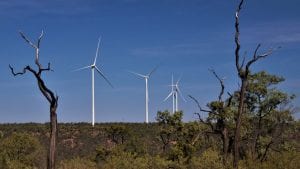The UK could adopt solar, electric vehicles and batteries much faster than expected just a year ago, according to the National Grid.
The new outlook is part of a rapidly changing landscape for the UK energy system, laid out in the 2016 Future Energy Scenarios. Marcus Stewart, National Grid’s head of energy insights, says in a foreword to the report: “We are in the midst of an energy revolution.”
Carbon Brief runs through the key changes in the outlook compared to last year.
Energy revolution
The idea that the UK energy world is in the midst of a period of rapid and fundamental change has been gaining traction since the start of the year. The usually conservative National Grid is the latest of several industry and government groups to use the language of “revolution”.
In February, a report for industry group Energy UK talked of a coming “revolution”, similar to those that have overtaken telecomms and banking. Then, in March, theNational Infrastructure Commission said embracing a “smart power revolution” could save the UK £8bn a year by 2030.
The National Grid report and press release includes Stewart’s quote on energy revolution, as well as saying that “electricity supply is going through a period of unparalleled transformation”. However, the report fails to spell out exactly how much the National Grid’s scenarios have shifted since last year.
They now see up to 39 gigawatts (GW) of solar installed by 2035, up from around 12GW today and up 7GW from last year’s maximum expectation for 2035 of 32GW. Two years ago, National Grid expected as little as 8GW and no more than 17GW of solar in 2030. Now, its minimum is 15GW.
The raised expectations for the number of electric vehicles on the road in 2035 is equally dramatic, ranging from a 23% to a 120% increase on last year’s report, with the range depending on the wider economic and policy environment. In total, there could be as many as 8.3m electric vehicles in 2035, the report says, making up nearly a quarter of all cars on the road.
This year’s scenarios also include, for the first time, a significant future role for battery electric storage. Last year’s outlook merely noted that storage was important and said new capacity could be unlocked with technological improvements, regulatory change and subsidies.
As of this year, “the value proposition has improved for storage”, says a National Grid document discussing stakeholder feedback received during its scenario development process.
This improvement is set to continue. The Future Energy Scenarios report says the cost of lithium ion batteries could halve by around 2019, and halve again by the early 2020s. It says:
If battery cost reductions continue and if attempts to remove regulatory barriers are successful, then the UK’s base of electricity storage capacity could increase from 3GW today to 11GW in 2030 and 18GW in 2040, the report suggests.
Storage today is almost exclusively in the form of pumped hydro stations in the Highlands and Snowdonia. National Grid says new storage capacity will mainly come from batteries, used initially to help manage the grid and then increasingly paired with solar on homes and businesses.

This new storage capacity will combine with an increase in flexible electricity generation capacity, the scenarios suggest, to balance out the variable output from wind and solar power.
Electricity interconnectors to other countries will also contribute and again the prospects have improved since last year. Capacity is now seen reaching up to 23GW in 2030, up from 4GW today.
Falling demand
National Grid’s outlook has shifted in other important ways in this year’s scenarios. Notably, its range for gas demand in 2030 has been cut by up to 12%. By 2040, the need for gas is seen falling by between 8 and 33%, compared to today’s levels.
All this suggests the National Grid sees the UK’s increasing dependence on imported gas, as highlighted by Reuters and Bloomberg, as being less severe than expected last year.
This year’s scenarios also trim expectations for electricity demand, seen being some 3-4% lower in 2030 than thought last year. Demand in 2030 is now expected to be no more than 4% higher and up to 5% lower than today’s levels, easing the UK’s pressing need for new generating capacity.
Not all of the changes set out in this year’s report are positive, however. National Grid has long included at least one scenario meeting the UK’s 2020 EU renewable energy target. Now the 15% renewable energy target is not expected to be met before 2022, as the BBC reports.
Similarly, emissions fall in line with the proposed fifth UK carbon budget in only one of the four National Grid scenarios; the others fail to hit the proposed 57% cut by 2030, against 1990 levels.
It’s worth noting, however, that the Future Energy Scenarios are not forecasts. Instead, they are stories designed to explore the full range of possible future outcomes, depending on plausible changes in costs as well as assumptions about economic growth and policy.
In previous years, the scenarios have simply assumed that policy would be brought in in time for the 2020 renewable energy target to be met. Now, it has fallen in line with wider expectations — including from the government itself — that the target is likely to be missed.
As noted above, the scenarios are struggling to keep up with the reality of rapid change in the energy sector. Consequently there have been relatively large changes in some aspects of the outlook over the past few years, particularly for new technologies such as solar and batteries.
This does not mean the scenarios are wrong, though predicting the future of energy is notoriously difficult. It does mean, however, that the general trends in the scenarios are more likely to be informative than the absolute numbers, which are very unlikely to be accurate.
As National Grid puts it:
Source: Carbon Brief. Reproduced with permission.










